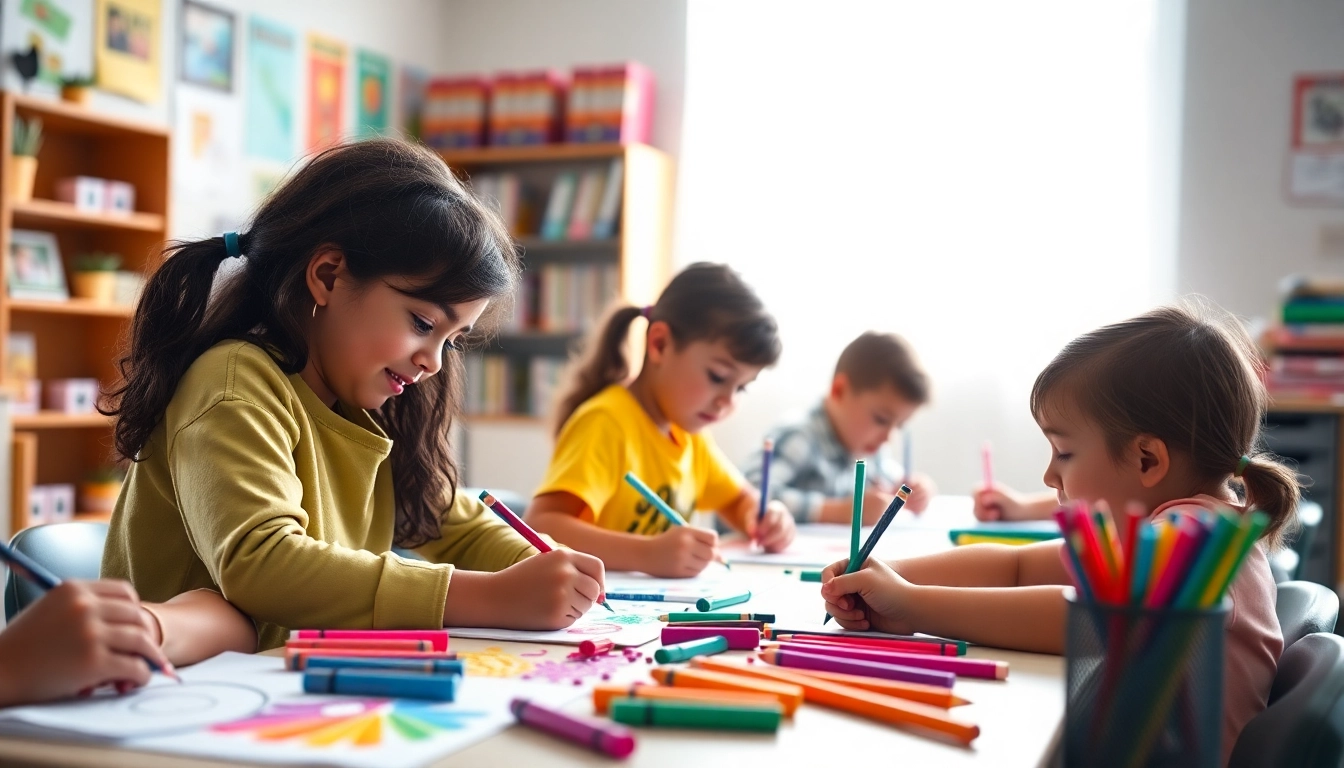Introduction to MyColor.school: A Hub for Creative Expression
In an era where creativity and visual engagement are vital components of education and personal development, platforms that provide accessible, versatile, and inspiring resources are more important than ever. mycolor.school has emerged as a leading online hub that champions the power of coloring as a fundamental educational and recreational tool for learners of all ages. From children exploring basic color recognition to adults seeking artistic relaxation, this platform sustains a vibrant universe of printable and digital coloring resources designed to foster creativity, support educators, and nurture community interaction.
Overview of Services and Offerings
MyColor.school offers an extensive suite of services centered around free printable coloring pages tailored for various interests and skill levels. These include themed collections such as holiday festivities, nature, cultural motifs, and educational topics, all curated to inspire learning and fun. Beyond static printables, the platform integrates digital tools that enable interactive coloring experiences, providing an innovative bridge between traditional artistry and modern technology. Additionally, there are resources for creating custom color palettes, educational worksheets, classroom decor, and themed activity ideas that enhance both home and school environments.
The website’s diverse library features hundreds of coloring pages, ranging from simple shapes for young children to intricate designs for advanced colorists. Such variety ensures that users can find suitable content for different age groups, learning goals, or special occasions. For parents and educators, mycolor.school supplies lesson plans, activity guides, and tips to incorporate coloring into educational frameworks, thereby promoting developmental skills, cognitive growth, and emotional well-being.
How mycolor.school Supports Educators and Parents
Supporting the educational community is at the core of mycolor.school’s mission. Teachers and parents can utilize its resources to enrich curriculum plans, introduce arts-based learning modules, or simply foster a relaxing, creative atmosphere at home or in the classroom. The platform offers ready-to-use printable materials that align with various subjects, including science, social studies, and language arts, making interdisciplinary activity integration seamless.
Moreover, mycolor.school provides guidance on implementing coloring activities that promote developmental milestones, such as fine motor skills, color recognition, and concentration. For instance, educators can assign themed coloring projects as part of thematic units, or use coloring pages as ice-breakers and reward mechanisms. For parents, the platform suggests ideas for collaborative art projects, coloring contests, and community events like color runs or art showcases, fostering engagement and community spirit.
One notable feature is the platform’s ability to support remote and hybrid learning models by providing digital coloring tools that students can access from any device, facilitating continuity of arts education regardless of physical location. This flexibility is especially relevant in current educational landscapes amplified by virtual learning needs.
Unique Features That Differentiate mycolor.school from Competitors
While numerous websites offer free coloring pages, mycolor.school distinguishes itself through several key features:
- Comprehensive Content Diversity: From seasonal themes to educational topics and cultural art, the platform hosts an expansive collection that caters to diverse interests and learning objectives.
- Interactive Digital Tools: Beyond static printables, users can employ online tools to generate custom color schemes, design personalized coloring pages, or simulate coloring experiences. For example, the ColorSpace tool allows users to craft harmonious color palettes, enriching the coloring process and enabling design consistency in projects.
- Educational Integration: Resources are carefully aligned with pedagogical principles, making it easier for teachers to incorporate coloring into lessons that boost fine motor skills, pattern recognition, and thematic understanding.
- Community and Sharing: The platform encourages community building through sharing artwork, hosting online contests, and engaging in thematic activities like color runs or art festivals.
- Sustainability and Accessibility: Free printables and digital resources ensure that economic barriers do not hinder access to creative learning, making it an equitable tool for all users.
These features position mycolor.school not just as a resource repository but as a comprehensive ecosystem that nurtures creativity, supports educational development, and fosters community engagement.
Designing a Colorful Learning Environment
Incorporating printable coloring pages into lesson plans
Coloring pages serve as versatile tools in educational settings, supporting various teaching strategies and learning objectives. Educators can integrate themed printable coloring sheets into lessons to reinforce concepts, enhance engagement, and develop skills such as fine motor control and spatial awareness.
For example, during a science lesson on animals, teachers might provide coloring pages featuring different species, encouraging students to learn about their habitats and diets while coloring. Similarly, cultural studies can be augmented with coloring sheets depicting traditional costumes or historic landmarks, turning passive observation into active participation. The key is aligning coloring activities with learning outcomes—for instance, using color-coding to teach categorization or patterns to bolster mathematical reasoning.
Using digital tools for interactive coloring experiences
Digital coloring applications and online tools open new horizons for interactive learning. Platforms like mycolor.space enable users to generate color palettes that foster understanding of color harmony and design principles. Interactive coloring apps, integrated with educational content, allow students to experiment with colors, undo/redo actions, and save their work digitally, fostering creativity without the waste associated with paper resources.
Use cases include virtual art classrooms, where students collaboratively build digital murals or explore color theory through guided exercises. These tools are especially advantageous for remote learning, ensuring that students retain access to engaging art activities regardless of location. They also support a more inclusive environment where children with physical disabilities or different learning needs can participate fully in creative endeavors.
Benefits of coloring for developmental and cognitive skills
Numerous studies validate the benefits of coloring for both young children and adults. It enhances fine motor skills, improves hand-eye coordination, and fosters concentration. The act of coloring involves precise movements, which strengthen finger muscles and improve dexterity. Moreover, coloring stimulates the brain’s visual processing centers, promoting focus and attention span.
Cognitively, coloring encourages decision-making, pattern recognition, and color differentiation. Emotional benefits include stress relief, emotional expression, and self-confidence, as learners see their artwork take shape. Integrating coloring into daily routines or classroom activities thus nurtures a well-rounded developmental profile, with tangible impacts on academic performance and emotional health.
Creating Custom Color Schemes and Collections
How to generate harmonious color palettes with mycolor.space
Developing visually appealing and cohesive color schemes is essential for professional-grade artwork and thematic decorations. mycolor.space offers intuitive tools to create harmonious palettes by selecting a base color and generating complementary, analogous, or triadic schemes. This process streamlines the design process, ensuring color consistency across projects such as classroom posters, event banners, or student artwork.
Steps to create effective color schemes include selecting a primary color that aligns with your theme or mood, exploring variations like lighter/darker shades, and testing combinations for visual harmony. Examples include using a gentle pastel palette for calming classroom decor or vibrant contrasting colors for engaging activity sheets. The flexibility of this tool allows iterative experimentation, leading to confident application of color in various educational materials.
Strategies for themed coloring projects and classroom decor
Successful themed projects often rely on cohesive color stories. For instance, during a unit on environmental conservation, using greens and browns can reinforce the theme of nature. During holidays, employing traditional color schemes enhances cultural authenticity and visual appeal.
Classroom decor benefits from custom color collections—creating banners, wall art, and organizational labels that match the lesson theme. Teachers can involve students in designing these color schemes, fostering ownership and understanding of design principles. Implementing themed coloring projects, such as a ‘Space Exploration’ mural using dark blues, blacks, and metallics, stimulates student imagination and reinforces subject matter.
Success stories of schools and parents enhancing creativity
Real-world examples demonstrate how effective color management boosts engagement:
- A primary school used custom palettes for a multicultural festival, creating cohesive posters and masks, resulting in increased student pride and parental involvement.
- Parents organized themed coloring nights at home, using digital palettes generated with mycolor.space, leading to strengthened family bonds and improved artistic skills among children.
- Art teachers incorporated palette creation into curricula, teaching students about color theory through hands-on exercises, leading to improved artwork and deeper conceptual understanding.
Engagement and Community Building
Sharing student artwork and coloring projects online
Building a vibrant community around coloring resources amplifies motivation and inspiration. Platforms like mycolor.school enable educators and parents to showcase student artwork on galleries, social media, and dedicated forums. Encouraging students to present their work fosters a sense of achievement and pride while inspiring peers to participate in creative activities.
Implementing regular art showcases, digital exhibitions, or themed contests can increase engagement. For example, a monthly ‘Color Your World’ challenge invites students to submit themed artworks, with winners featured on the platform and social channels, promoting positive reinforcement and recognition.
Participating in school color runs and themed activities
Interactive events like color runs—fundraiser activities where participants are splashed with colored powder—are excellent ways to foster community spirit and promote healthy activity. Such events can be themed around school colors, environmental awareness, or cultural celebrations, integrating coloring projects beforehand to involve students in designing event posters, banners, and instruction materials.
Additionally, themed art days, mural painting projects, or collaborative coloring murals in school hallways create a dynamic and inclusive environment. These activities encourage teamwork, artistic expression, and school pride, transforming the learning environment into a colorful ecosystem.
Building a vibrant, inclusive creative community around mycolor.school
Inclusivity is fundamental in fostering a thriving creative community. MyColor.school promotes accessible resources for learners with diverse abilities, encouraging participation from all students regardless of skill level. Hosting online forums, collaborative projects, and community events broadens engagement and nurtures a sense of belonging.
Teachers and parents can leverage these community platforms to exchange ideas, showcase innovative projects, and provide peer support. Over time, such networks contribute to a culture of creativity, acceptance, and continuous learning—key ingredients for enriching educational environments.
Future Trends and Best Practices in Educational Coloring
Innovative digital coloring tools and resources
The future of educational coloring lies in technological innovation. Augmented reality (AR) and virtual reality (VR) tools are beginning to incorporate coloring elements that enable immersive experiences—coloring in 3D objects or virtual murals that respond to user input. Platforms are also integrating Artificial Intelligence (AI) to suggest color schemes based on the image and thematic context, making creative decisions more accessible to learners.
Additionally, adaptive coloring programs tailored to individual learning needs can adjust difficulty levels, support special education, and track progress. These tools empower educators to personalize art activities, increase engagement, and measure developmental progress with precision.
Environmental and sustainability considerations in coloring projects
Sustainability concerns influence the choice of coloring resources. Digital coloring reduces paper waste and allows limitless experimentation. For physical materials, educators and parents are encouraged to select eco-friendly options, such as recycled paper, biodegradable crayons, and non-toxic inks. Incorporating lessons on environmental stewardship alongside coloring activities helps students understand the importance of sustainability and responsible resource use.
Running campaigns that promote upcycled art projects or community recycling initiatives further reinforce ecological awareness, turning coloring into an avenue for environmental education.
Measuring impact: student engagement and learning outcomes
Effective evaluation practices are essential for integrating coloring activities into curricula successfully. Data-driven approaches involve tracking participation rates, assessing skill development through rubric-based evaluations, and collecting qualitative feedback from students and teachers.
Pre-and post-activity assessments can demonstrate gains in fine motor skills, creativity, and conceptual understanding. Incorporating reflective discussions and portfolios allows students to articulate their learning experience and artistic growth. Over time, these metrics inform best practices and validate the role of coloring as a transformative educational tool.






